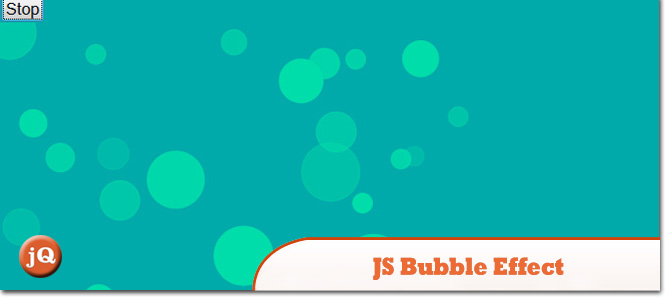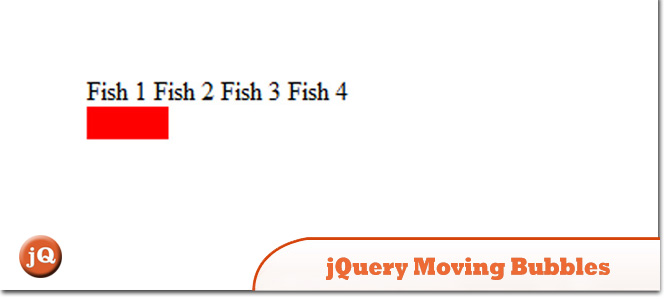These 5 JS Random Moving Bubble Effects display cool animated “bubble” effects with few lines of code in JavaScript/jQuery. Check them out!
1. JS Bubble Effect #1
JS Bubble Effect 1
 SourceDemo
SourceDemo
2. JS Bubble Effect #2
JS Bubble Effect #2
 SourceDemo
SourceDemo
3. jQuery.moving-bubbles
This jQuery plugin is created so you can easily let objects move around your page
 Source
Source
4. bubbles
Images now can go up and down (allowing bubbles, as well as snow)
 Source + Demo
Need to add a 5th here! Leave a comment if you find a good one!
Source + Demo
Need to add a 5th here! Leave a comment if you find a good one!
Frequently Asked Questions (FAQs) about JS Random Moving Bubbles Effects
How can I create a bubble effect using JavaScript?
Creating a bubble effect using JavaScript involves a few steps. First, you need to create a canvas element in your HTML file. This will serve as the container for your bubbles. Next, you need to create a JavaScript file where you will write the code for the bubble effect. In this file, you will need to define the properties of the bubbles such as size, color, and speed of movement. You will also need to create a function that generates the bubbles at random positions on the canvas. Finally, you will need to call this function at regular intervals using the setInterval method. This will create the effect of bubbles continuously appearing and moving around the canvas.
What is event bubbling in JavaScript?
Event bubbling is a concept in JavaScript that refers to the way events propagate or “bubble” up through the DOM (Document Object Model). When an event occurs on a DOM element, that event is not only triggered on that element but also on all its parent elements. This means that if you have a click event on a button, for example, that event will also be triggered on the button’s parent element, its grandparent element, and so on, all the way up to the root of the DOM.
How can I control the speed of the bubbles?
The speed of the bubbles can be controlled by adjusting the value of the velocity property in your JavaScript code. The higher the value, the faster the bubbles will move. Conversely, a lower value will make the bubbles move slower. You can experiment with different values to achieve the desired effect.
Can I change the color of the bubbles?
Yes, you can change the color of the bubbles by modifying the color property in your JavaScript code. You can set this property to any valid CSS color value. For example, you could use a hexadecimal color code like ‘#FF0000’ for red, or a named color like ‘blue’.
How can I make the bubbles move in different directions?
To make the bubbles move in different directions, you can use Math.random() function in your JavaScript code to generate random values for the velocity property of each bubble. This will cause each bubble to move at a different speed and in a different direction.
Can I use this effect on any website?
Yes, you can use this effect on any website. All you need to do is include the JavaScript file in your HTML file using the script tag. You can then customize the effect to suit the design and layout of your website.
Is it possible to create different shapes other than bubbles?
Yes, it is possible to create different shapes other than bubbles. The shape of the objects is determined by the code you write in your JavaScript file. By modifying this code, you can create objects of any shape you want.
Can I control the number of bubbles that appear on the screen?
Yes, you can control the number of bubbles that appear on the screen by adjusting the number of times the function that generates the bubbles is called. The more times the function is called, the more bubbles will appear.
How can I stop the bubbles from moving?
To stop the bubbles from moving, you can clear the interval that is set using the setInterval method. This will stop the function that generates and moves the bubbles from being called.
Can I use this effect with other JavaScript libraries or frameworks?
Yes, you can use this effect with other JavaScript libraries or frameworks. You just need to make sure that the code for the bubble effect does not conflict with any other JavaScript code on your website.
 Sam Deering
Sam DeeringSam Deering has 15+ years of programming and website development experience. He was a website consultant at Console, ABC News, Flight Centre, Sapient Nitro, and the QLD Government and runs a tech blog with over 1 million views per month. Currently, Sam is the Founder of Crypto News, Australia.

